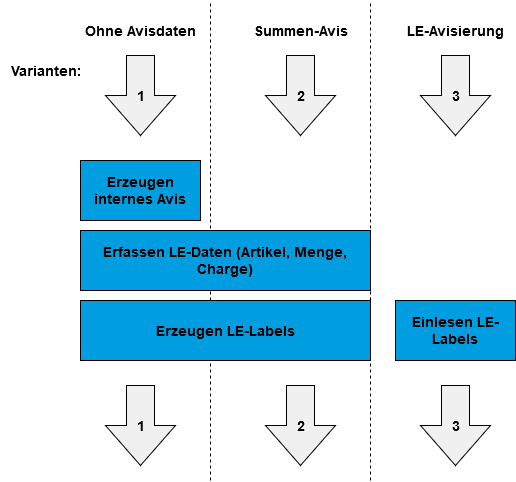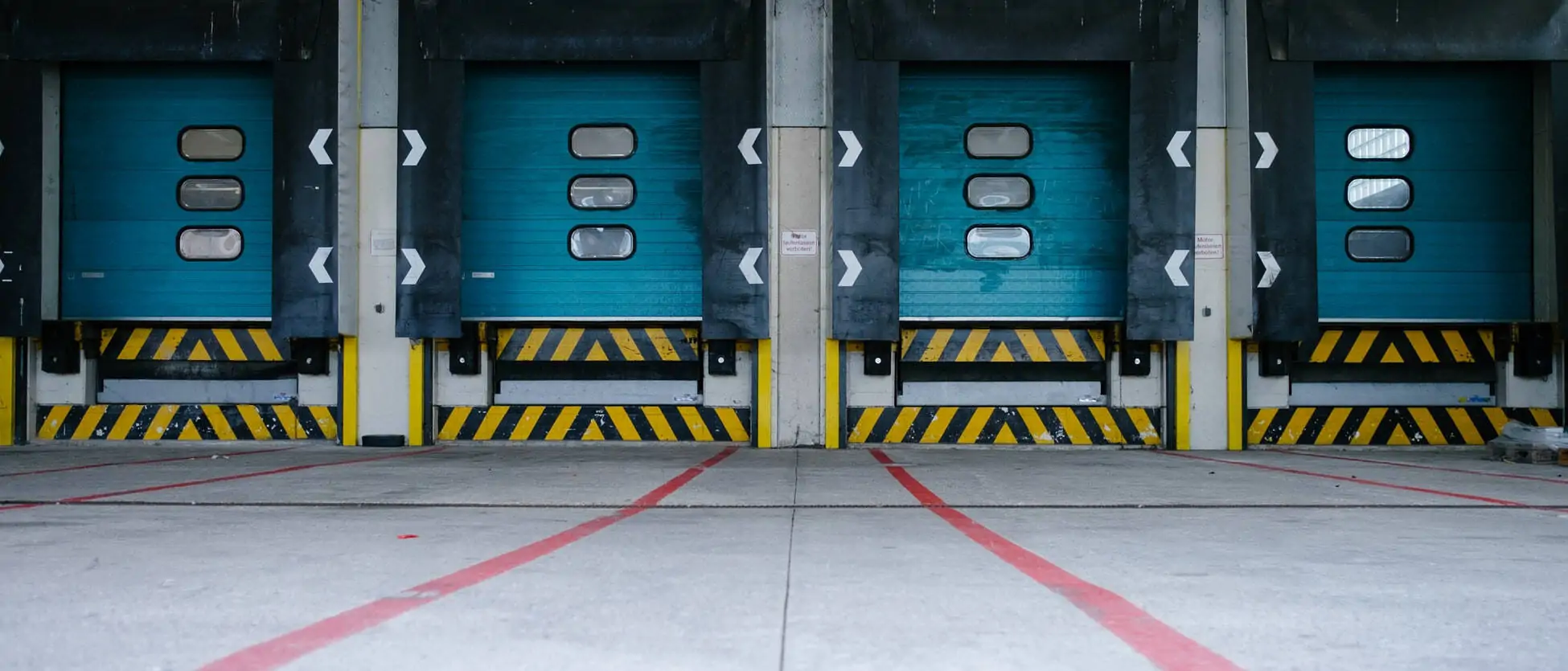Goods Receipt in intralogistics – definition and overview
The design and scope of the goods receipt process are relevant to the efficiency of a warehouse. If the goods receipt process is planned incorrectly or organized poorly, it can lead to disruptions in operations. In the goods receipt business process, items are identified and first checked for completeness and damage in a visual inspection. Then the items are recorded and, if necessary, relabeled. After a successful incoming inspection, the goods are booked and passed on for storage.
The goods receipt of a warehouse usually consists of the following components:
- Ramps
- Gates
- Staging areas
- Functional areas (e.g. for controls and load securing)
Tasks of the goods receipt
Typical tasks performed by the goods receipt department include:
- Checking the inventory for identity, quantity and quality
- Temporary storage until the goods receipt inspection is complete
- Unloading delivery vehicles
- Unpacking and sorting packages
- Labeling the inventory
- Booking the inventory
The goals of a successful goods receipt phase are to create short throughput times, to keep the space requirements and employee commitment as low as possible, and to achieve a high process quality.
Goods Receipt – Identification and Status Processing
When inventory is delivered, various preliminary work must be carried out as part of the goods receipt. This is done in the process steps of identification and status processing.
Identification via the goods receipt notification
At goods receipt, the inventory is to be identified in a multi-step process. Usually, the system can access an article master (coming from the commercial system), so that the basic data of the article is already known to the system. Due to the close integration between the logistics computer and a higher-level commercial level, there is usually preliminary information about the incoming goods – a ‘notification’, often shortened to ‘avis’. Depending on the conditions, the receipt of inventory includes the following steps:

- If a goods receipt advice note is missing, an internal advice note is usually created (manually) to ensure that it is treated in the same way as the other two cases.
- If a summary goods receipt advice note can be used, the identification phase is limited to entering the data for each storage unit (SU), for example pallet or carton, and system-compliant labeling of the SU. Today, the assigned storage location no longer has to be printed on such a label, since the assignment can also be made using mobile terminals, for example, when the goods are picked up by a forklift truck.
- Ideally, the sender will provide advance notification of the SU data. When the goods are received, the already labeled LUs (logistics unit) only need to be scanned with a barcode reader. The prerequisite for this is an agreement on a numbering and barcoding system that can be clearly interpreted by both partners (→ EAN/CCG / SSCC “serial shipping container code”).
Goods Receipt – Status Processing
In status processing, the goods description is further refined at goods receipt. Some of the associated steps can also take place after putaway (e.g. quality release after evaluating a sample). The linked tasks vary greatly depending on the industry. They range from ‘non-existent’ to comprehensive quality management and customs processing for the collection of uncleared foreign goods.
The collection of returns alone involves processes of any complexity, which usually require close integration with the commercial system (customer and invoice data required).
Goods Receipt – Key Performance Indicators
The efficiency, productivity, and quality of the goods receipt process can be evaluated using the appropriate warehouse key performance indicators.
The delivery times, the number of articles, and the distribution of articles to different destinations are important for the control center.
Measuring the Goods Receipt Targets
The key performance indicators for the following processes are important for measuring the goods receipt objectives:
- Number of items received
- Goods receiving time
- Area utilization
- Work progress
- Quality of the goods receipt
The recipients of these key figures include
- the head of logistics,
- the head of goods receipt and
- other employees who play a role in the goods receipt.
Goods Receipt in Accounting
Goods receipt is not only an intralogistics process but also an accounting process. The collection of inventory at goods receipt means that the company’s stock is increased and capital is tied up. For these postings, accounting requires corresponding documents, which are available in the form of delivery notes or incoming invoices.
Summary
Goods receipt is a business process in intralogistics that affects the performance of a warehouse. Both expected and unexpected deliveries (orders/returns) are received and prepared for further processes such as putaway. In terms of intralogistics, this includes the sub-steps of identification and status processing, and in terms of accounting, the recording of incoming goods. When goods are received, it is important to carry out sufficient checks to ensure that subsequent processes run smoothly. However, it is also important to keep throughput times and staff deployment low in order to maximize efficiency. To this end, there are goods receipt target values, which can be measured and checked for achievement using metrics.
After the “Goods Receipt” business process, the “Storage” process takes place. For more information about this, go to Storage – Process Steps.
For more information about combining or splitting individual parts, go to Consolidation and Deconsolidation.
